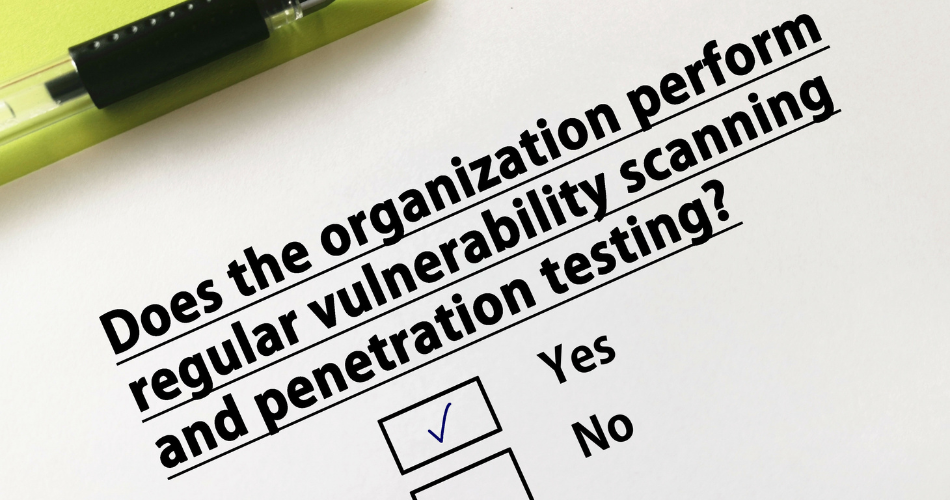8 Recovery Tips Every Organization Needs After a Data Breach
Every 39 seconds, a cyber attack occurs with an estimated 30,000 websites globally attacked every day. Cybersecurity threats can quickly become a reality and if this happens, your organization needs to be prepared with an incident response plan, or IRP.
Not only is it an ordeal to rebuild after a data breach, but it can be challenging to rebuild the trust in your customers and/or stakeholders as well. Roughly 47% of consumers stop doing business with a company when a breach in their digital security has occurred.
If your business has been hit by a cyber attack that affected your operations and made your customers lose trust, don't worry – we're here to help you recover your systems, restart your operations, and help you rebuild your good reputation. Keep reading to learn more.
1. Addressing the Cause
Conducting a thorough investigation is imperative. Weaknesses and vulnerabilities will need to be identified and once the cause has been confirmed, remediation should be undertaken.
Some of the actions involved in this process include:
- Isolating the affected system
- Assessing the extent of the incident
- Containing and mitigating the damage
- Enhancing security measures to minimize the risk of another incident
Regular infrastructure audits are recommended as a means to aid in identifying potential risks before they can be exploited by malicious actors.
Employee training also plays a critical role in addressing cybersecurity issues. Educating your employees helps raise awareness about common tactics used by cyber criminals. This can significantly reduce the risk of breaches caused by human error.
In addition, working with IT professionals and cybersecurity experts will help address the root issues. These specialists have knowledge and experience you can leverage. They can uncover hidden vulnerabilities within your system, and recommend solutions tailored to your specific operational requirements and needs.
2. Notifying Relevant Parties
After a cybersecurity incident, it is vital for organizations to notify all parties potentially affected. Remember, notifications are required by law, both federal and state. Timely notification in the proper way is an initial step in rebuilding the trust of all parties affected.
It's important to promptly notify those potentially affected by the incident within the required timeframe. All notifications should be reviewed by legal counsel to ensure that you have met the letter and spirit of the law. Provide clear and concise information that should include the following:
- What happened
- How it may impact them
- Any immediate actions they should undertake to protect themselves and their best interests
Be transparent about the extent of the incident without causing unnecessary alarm.
Provide open channels of communication
Provide a method for those affected to reach out with any questions or concerns, making sure those channels are staffed by knowledgeable personnel who will stay on script. In addition to providing information, they should also be empathetic to the caller as that person may be concerned, very scared, and/or angry.
Take Ownership
Take responsibility for the event without admitting to any shortcomings that contributed to the incident. Admitting to specifics may aid law enforcement or lawyers in taking legal action against you or your organization. Outline the steps you're taking to prevent future incidents from occurring again.
Those affected want reassurance that you're actively working towards strengthening security measures. They don't want to worry that your company won't be able to protect their info in the future.
Be empathetic
Never underestimate the power of empathy in your communications with those potentially affected. Acknowledge their concerns and frustrations and express regret for any inconvenience caused by the incident but stay on script.
When you show empathy in your communications, it makes it easier to rebuild trust.
Remember, all communications including announcements, press releases, media interviews, website updates, and call center scripts should be reviewed and approved by your PR Team (if you have one) and Counsel prior to dissemination. Failure to do so may result in additional problems and substantial legal jeopardy.
3. Offer Protection for Impacted Customers
It's essential to offer practical solutions for impacted customers. Consider providing resources at no cost. Some of these may include credit monitoring services or identity theft protection programs.
These services can detect suspicious activities including potential fraud or identity theft. It is highly recommended that you implement additional security measures to protect confidential data.
By initiating proactive measures after a breach, organizations can show they are dedicated to regaining their users' trust and safeguarding against potential future threats.
Consider cyber Insurance
Cyber insurance often provides coverage for post-incident communication and other expenses. Many policies state that in the event of an incident, your first call must be to the Carrier. Failure to do so may result in the Carrier denying some or all of the claim. If you are required to tell affected customers and/or offer credit monitoring, your insurance may pay for it.
Most cybersecurity insurance policies include access to expert advice and resources that can help with managing the incident including communicating with those affected. Insurance company experts can help you deal with the incident and protect both the customers’ and your best interests.
4. Create a Plan to Prevent Future Attacks
After dealing with a cybersecurity incident, it is imperative to focus on preventing future attacks. To earn back your customers' trust and protect their private information, you need a solid plan, one that is vetted by 3rd party subject matter experts. Many organizations retain 3rd party professionals such as JANUS to review their existing plan, make recommendations, or even create a new cybersecurity plan.
5. Assess Your Current Measures
Start by conducting a thorough vulnerability assessment of your current enterprise. Identify vulnerabilities or weaknesses that may lead to an incident and implement necessary updates and improvements to ensure better protection in the future.
6. Invest in Advanced Solutions
These can include next-generation firewalls, multi-factor authentication, intrusion detection systems, and encryption technologies. Regularly update these tools and stay informed about emerging threats. This will help you adapt your defenses accordingly.
7. Train Your Employees
Provide comprehensive training for employees on cyber security best practices. Educate them about potential risks including phishing scams and other forms of social engineering tactics that cyber criminals and nation-states may employ. Educating your team will help them protect the enterprise against cyber threats.
8. Test Regularly
Regularly test all security aspects of your enterprise. Make use of external and internal penetration testing or better yet, undergo a full vulnerability assessment to proactively identify any weaknesses that currently exist. The results of this will allow you to patch vulnerabilities and make improvements before attackers can exploit them.
Work with Subject Matter Experts
Your cybersecurity should be an essential part of your operation and if you are concerned about the level of your cybersecurity readiness or have experienced a cybersecurity incident of any type, contact the professionals at JANUS.
We are here to help you identify cybersecurity threats, minimize risks, and fortify your defenses.
Topics
- Business Resilience (20)
- Data Breach Protection (12)
- Incident Response (12)
- Employee Security Awareness Training (11)
- Managing Cyber Risks (8)
- Cybersecurity Education (6)
- Ransomware (6)
- AI and Cybersecurity (5)
- Cyber Threat Report (5)
- Penetration Testing (5)
- Cyber Insurance (4)
- Business Continuity & Disaster Recovery (BCDR) (3)
- CIO & CISO Services (3)
- Case Study (3)
- Enterprise Risk & Compliance (3)
- Information Security (InfoSec) (3)
- Vulnerability Assessments (3)
- Attack Surface Discovery (ASD) (2)
- Cybersecurity Maturity Model Certification (CMMC) (2)
- Small Business (1)









